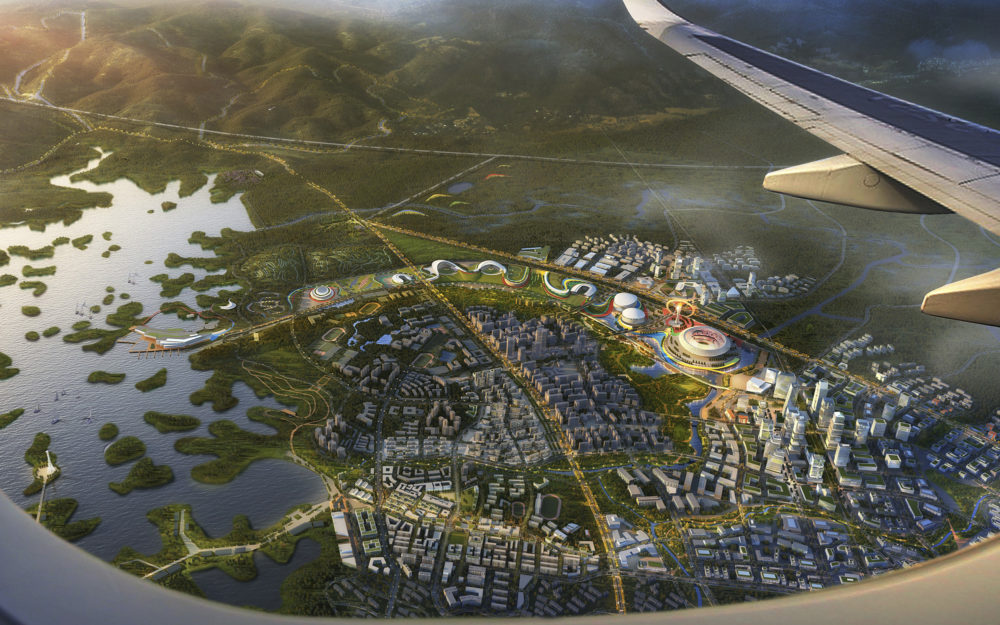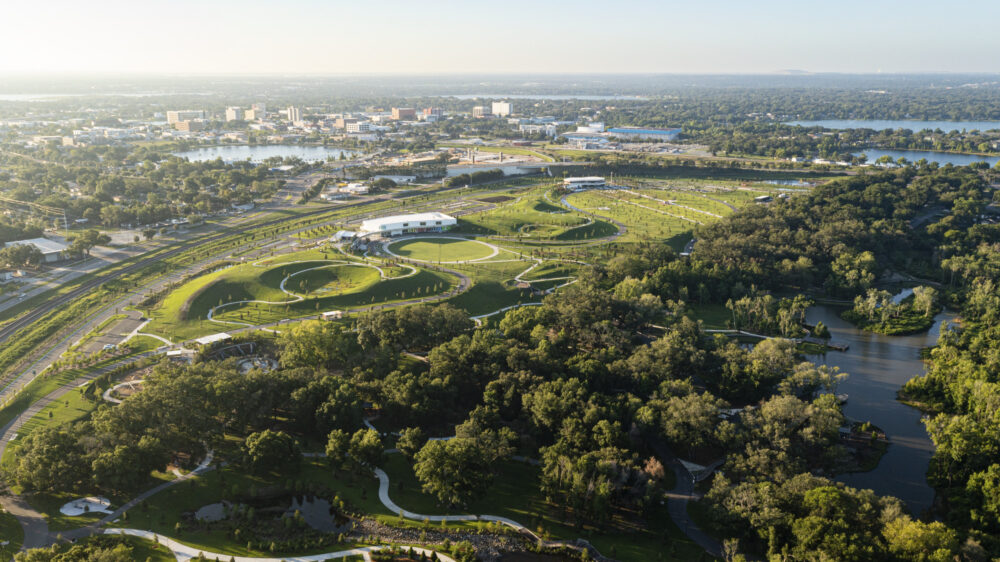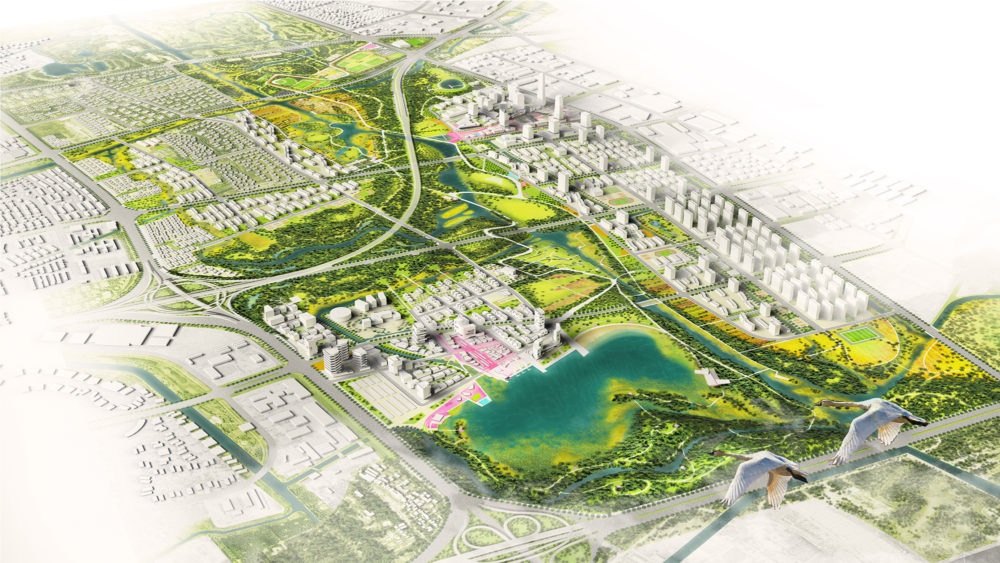Weaving together urbanization and conservation efforts in a haven for the giant panda near one of the fastest growing cities in the world
Chengdu Panda Reserve
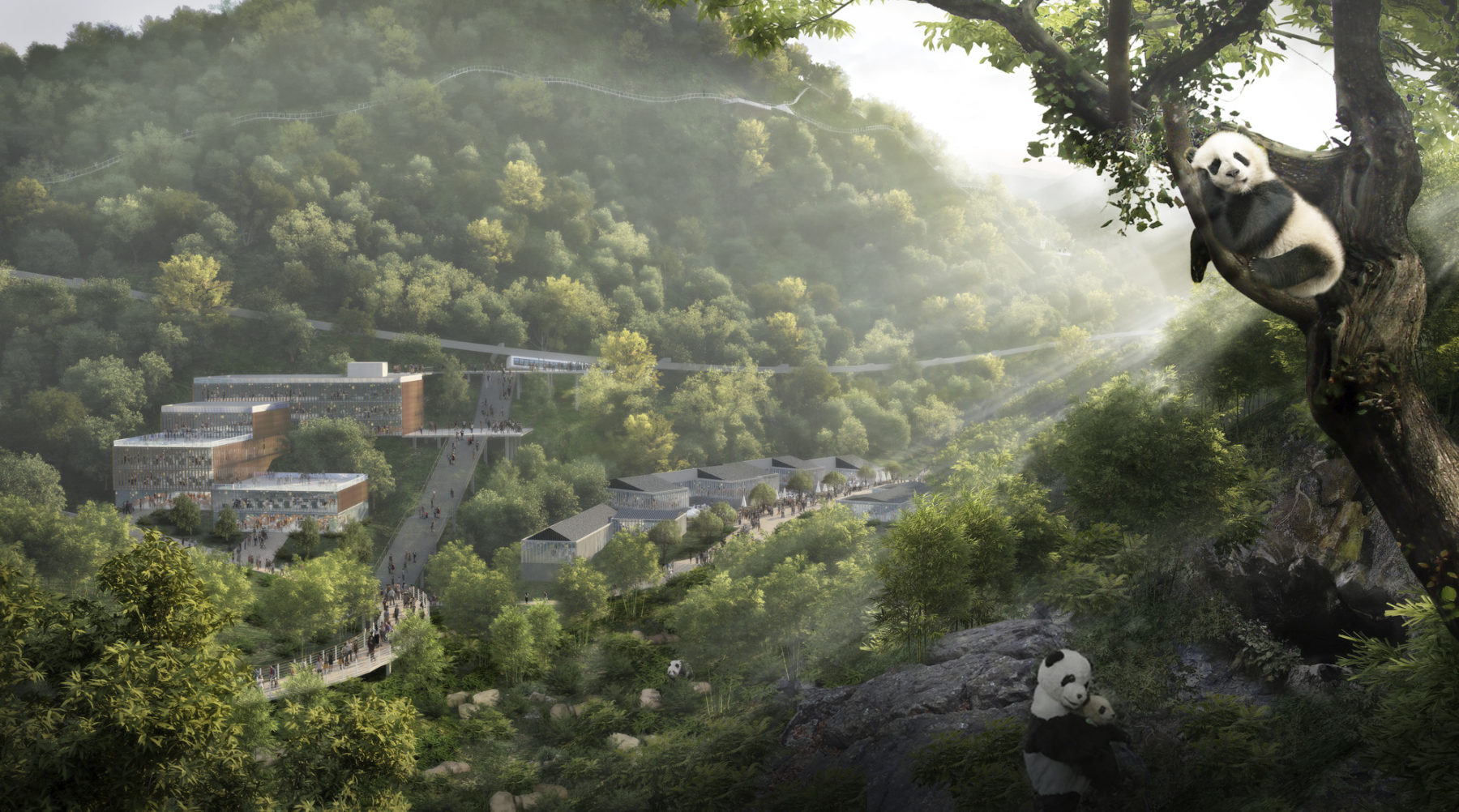
The new master plan will help ensure that the city will grow in a sustainable manner while reaffirming its brand as the panda capital of the world and securing a shared future for both of the area’s major species
The giant panda is an icon of Chinese culture and a symbol for wildlife preservation efforts around the world. With only about 1,800 left in the wild, it is one of the most vulnerable species on Earth. Although a staple at many zoos around the world, giant pandas are native to only one region in western China near Chengdu, which is also one of the fastest growing cities in the world. Although urbanization and conservation are often in conflict with each other, the Chengdu Panda Reserve provides a framework for the protection of the giant panda and its native habitat, and strategies which will lead Chengdu into a more resilient future.
The master plan for the Chengdu Panda Reserve represents the launch of China’s increasing communication, collaboration, and awareness of its pioneering strategies to protect the species and its native habitat. Conservation efforts have multiple benefits, as pandas serve as an ‘umbrella species’ for other wildlife which indirectly benefit from the protection of their shared habitat. Sasaki’s plan for the reserve provides a framework for the protection of the species through a robust expansion plan focused on conservation, education, and research—with the ultimate objective of improving their ability to thrive in the wild.
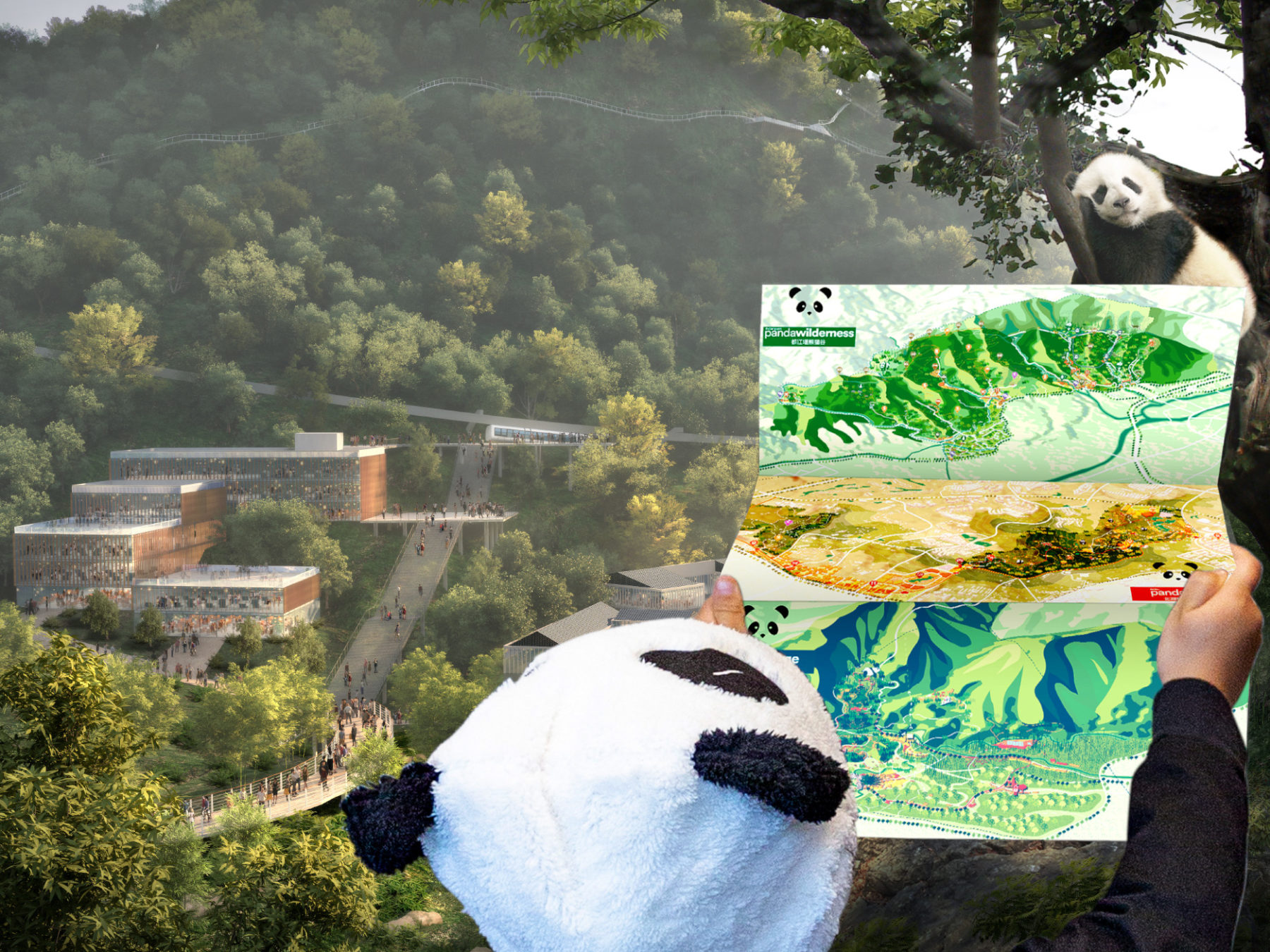
It is difficult to name an animal more beloved than the giant panda. The near-universal adoration of this endangered species was never far from mind as Sasaki collaborated with city leaders to thoughtfully grow the city while building a resilient future for the species.
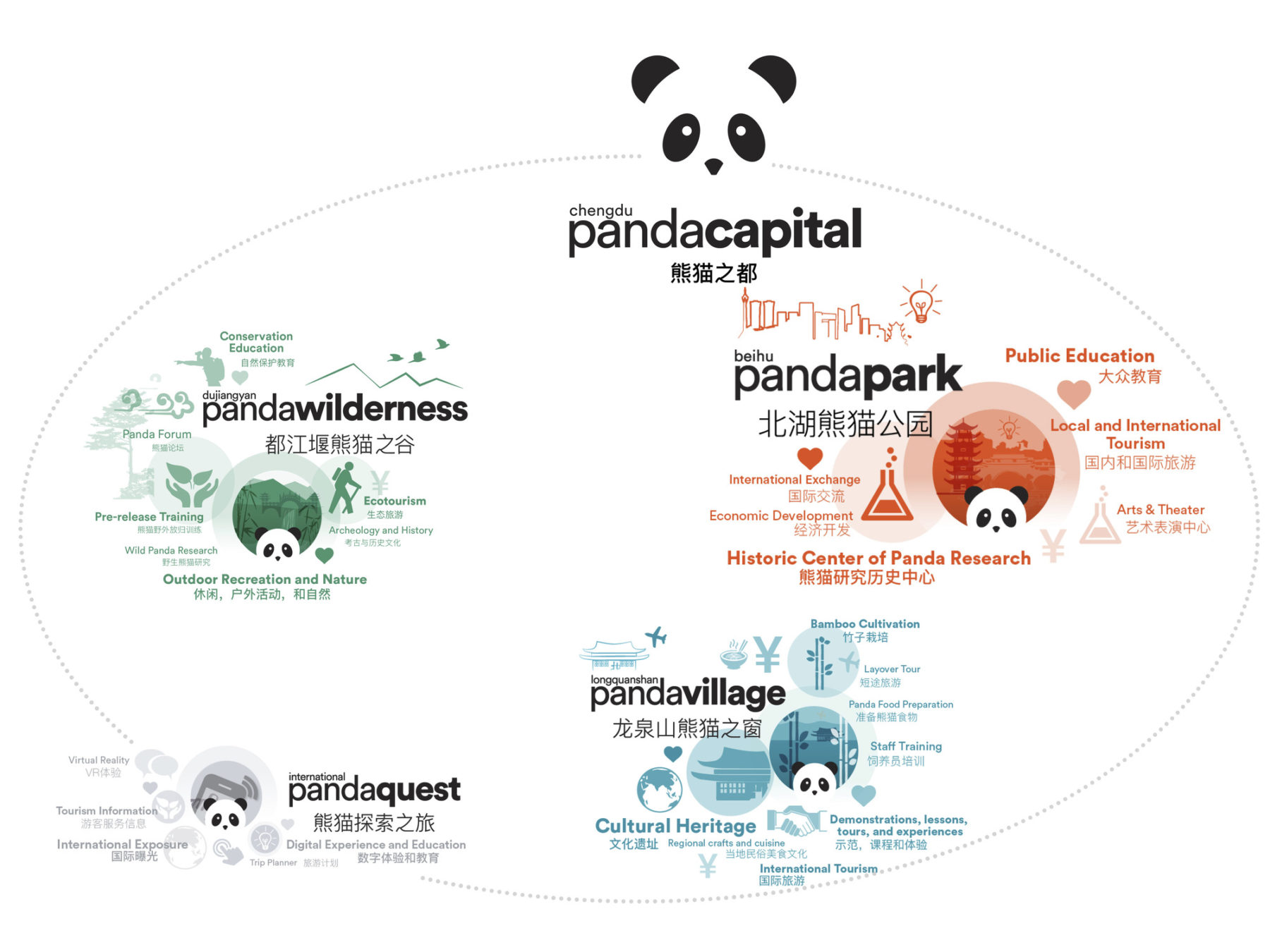
The Chengdu Panda Reserve includes three physical sites, as well as an online experience via the pandaquest app which allows people from anywhere to experience Chengdu as the “panda capital” of the world
With over 20 million people expected to visit the Chengdu Panda Reserve each year—a figure that surpasses current annual visitors to Disneyland—the city has a tremendous responsibility to advance its development in a manner that is mindful of protecting the panda’s habitat.
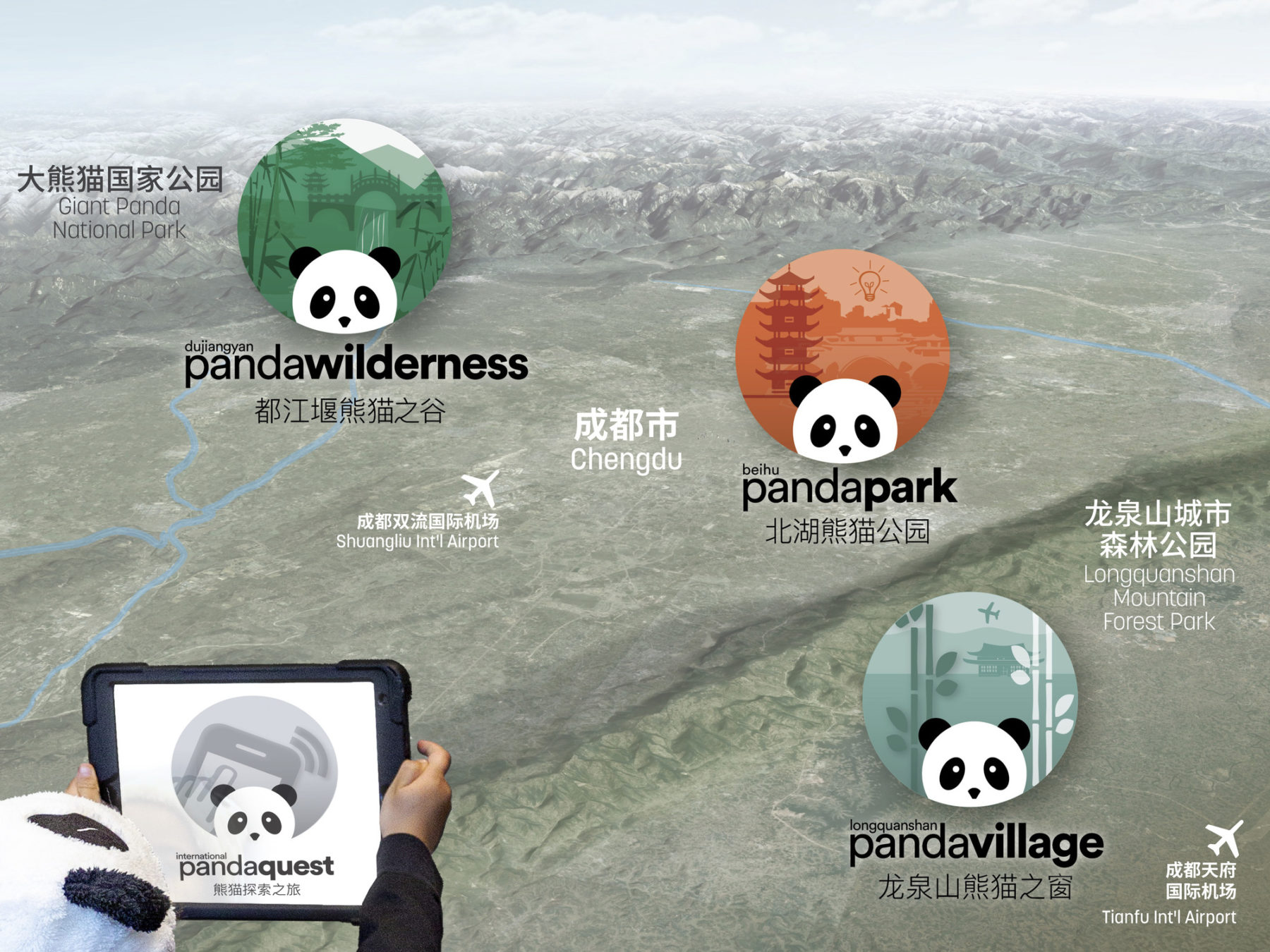
The Chengdu Panda Reserve is comprised of three distinct destinations: the Longquanshan Panda Village, the Beihu Panda Park, and the Dujiangyan Panda Wilderness
The three disparate sites which comprise the Chengdu Panda Reserve are organized by their primary functions, as well as the amount of human interaction and disturbance. The first site, Beihu Panda Park, builds upon the existing “Panda Base” visitor experience by providing an urban education center to accommodate those seeking a more immersive experience. This urban destination, close to downtown and linked to the city by public transit, introduces the panda to the millions of people who come to Chengdu each year to experience them up close. Here, visitors can learn about the daily lives of pandas and their companion species, their shared habitat, and get a glimpse into ongoing research and other efforts to protect them.
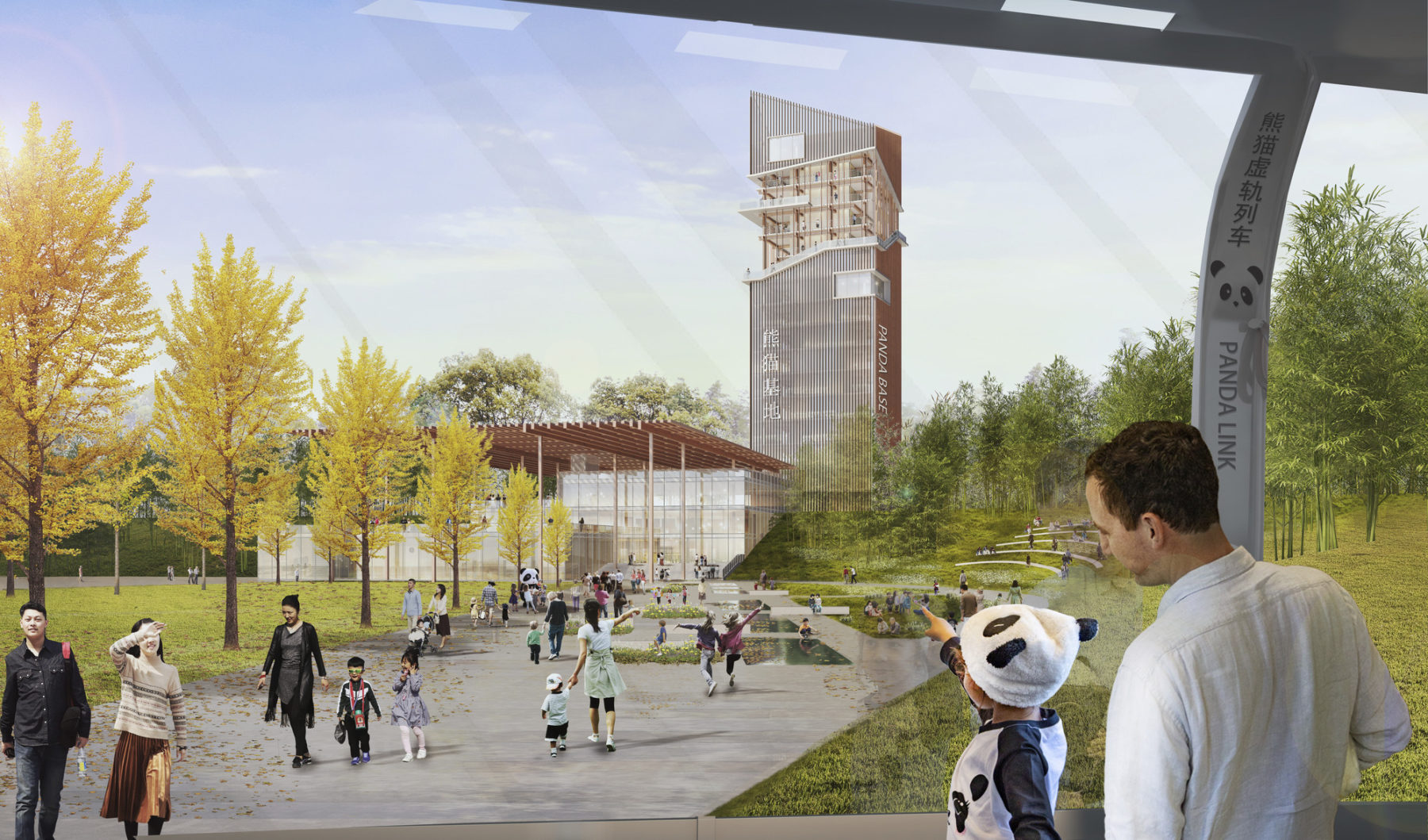
A new entrance will become the main hub of the Beihu Panda Park and is served by an autonomous transit line that connects visitors arriving via public transit to all destinations within the park
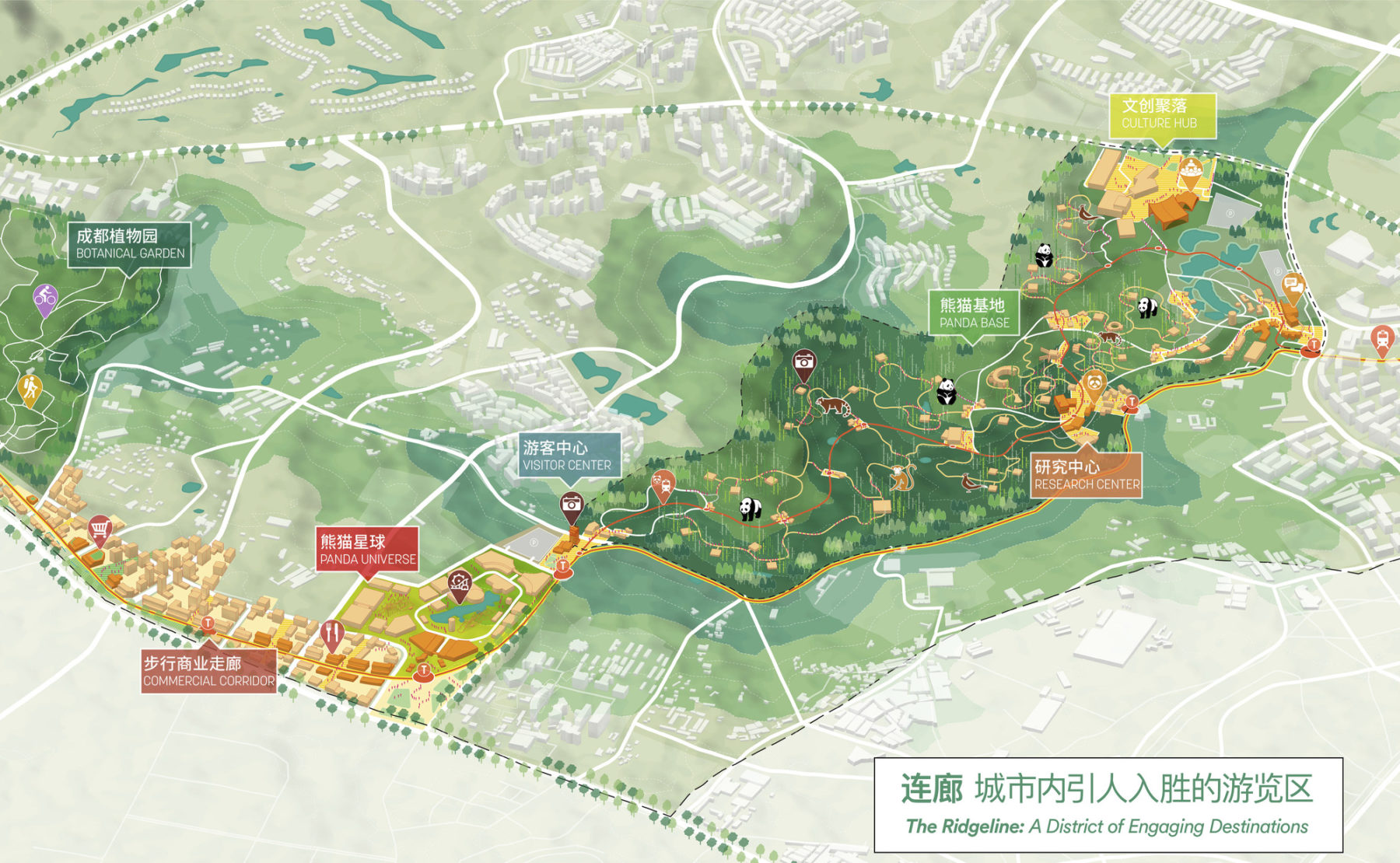
Beihu Panda Park is designed as a district of engaging destinations including the expansion of the existing “Panda Base” research facility and visitor experience, the Chengdu Botanical Gardens, a wetland park, and additional mixed-use development situated along the primary public transit corridor
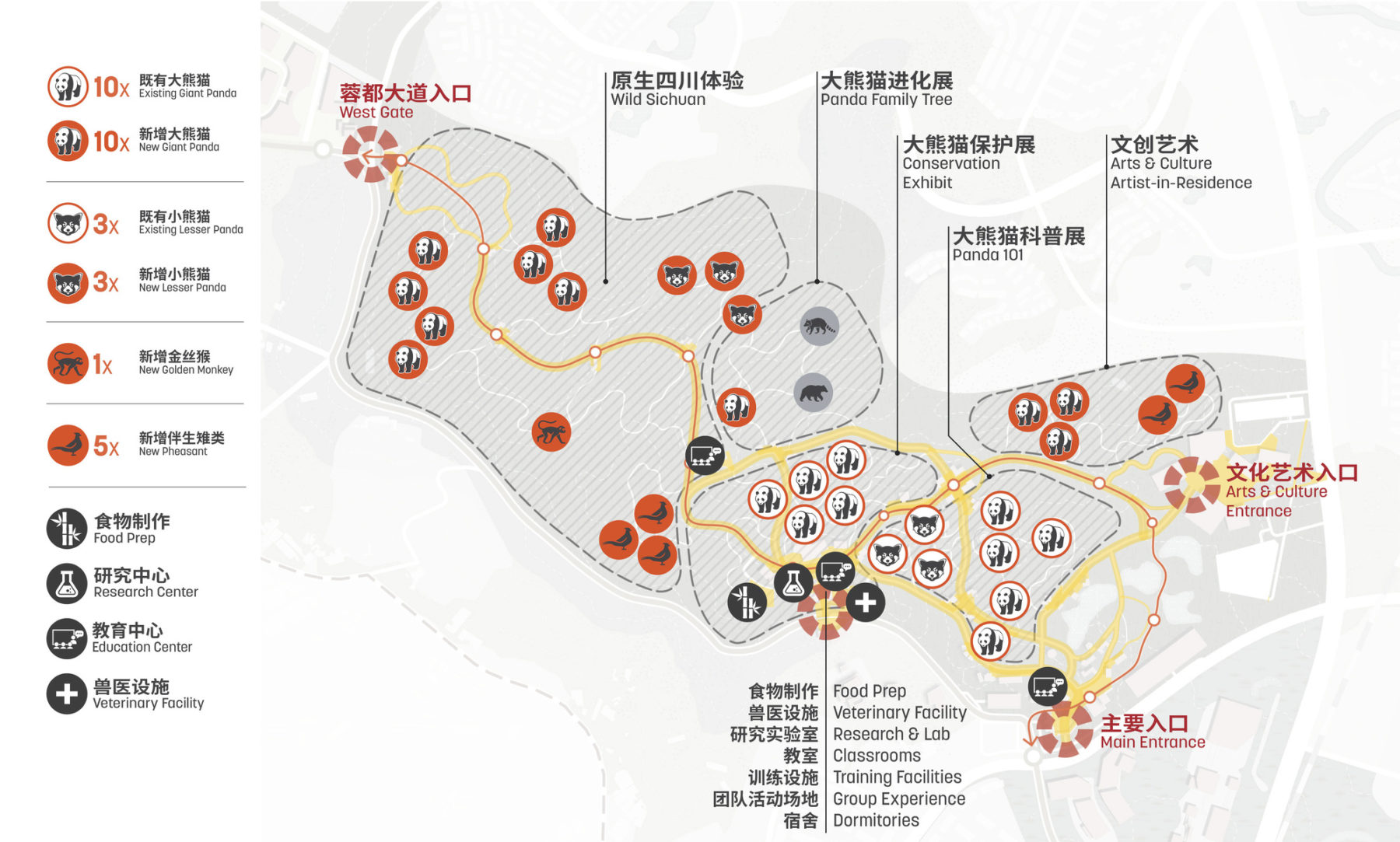
The panda base
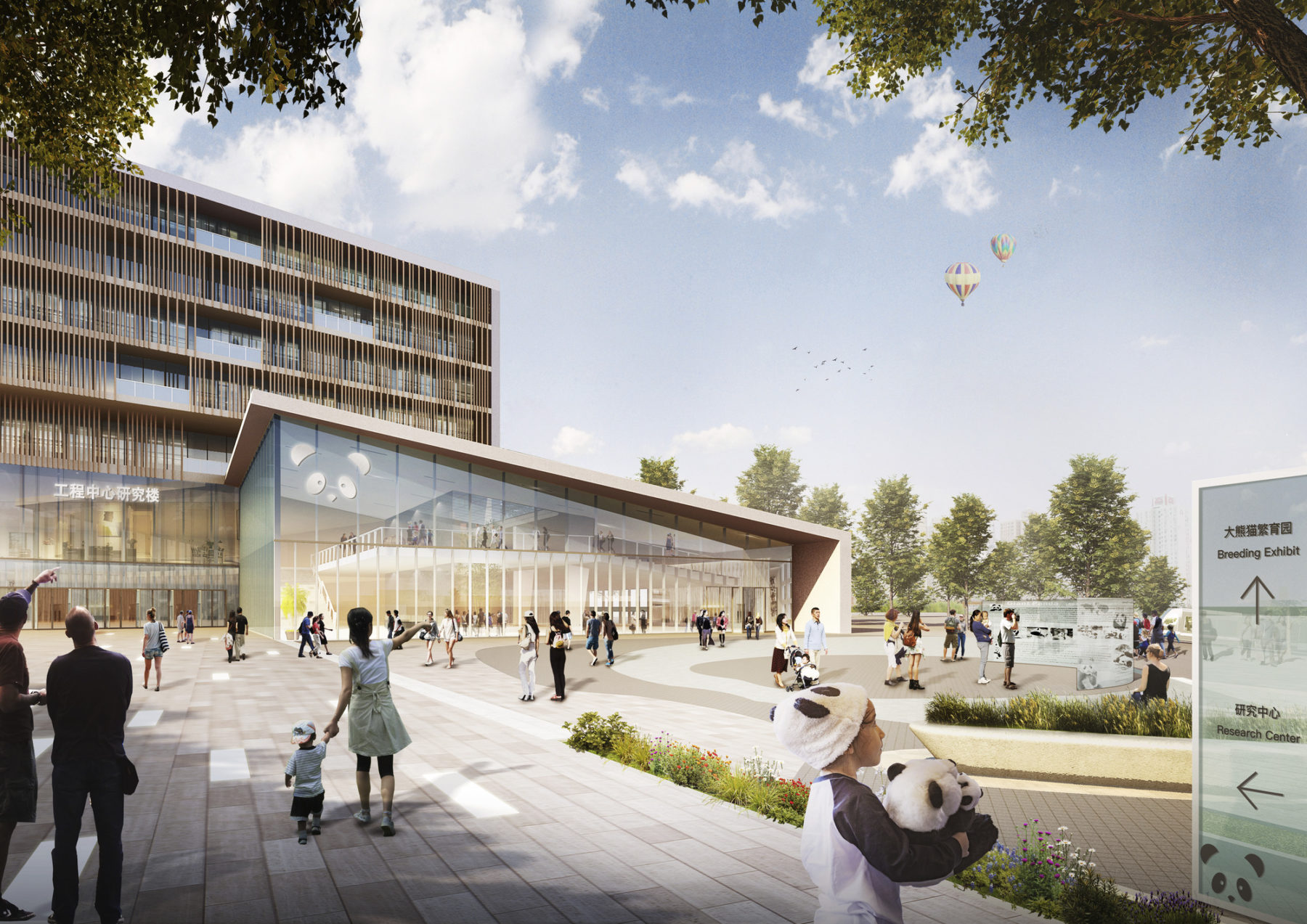
State-of-the-art Panda breeding research facilities and labs at the Beihu Panda Park provide visitors with unique opportunities to witness the variety of cutting edge conservation efforts being undertaken at the Chengdu Panda Reserve
The second and most remote of the three sites that comprise the Chengdu Panda Reserve is the Dujiangyan Panda Wilderness. Primarily focusing on research, including breeding techniques and assimilation into the wild, this more isolated area of the reserve is located at foothills of the Tibetan plateau. As one of the gateways into the Giant Panda National Park, researchers here focus on pre-release training to acclimate juvenile pandas born in captivity prior to final release into the wild.
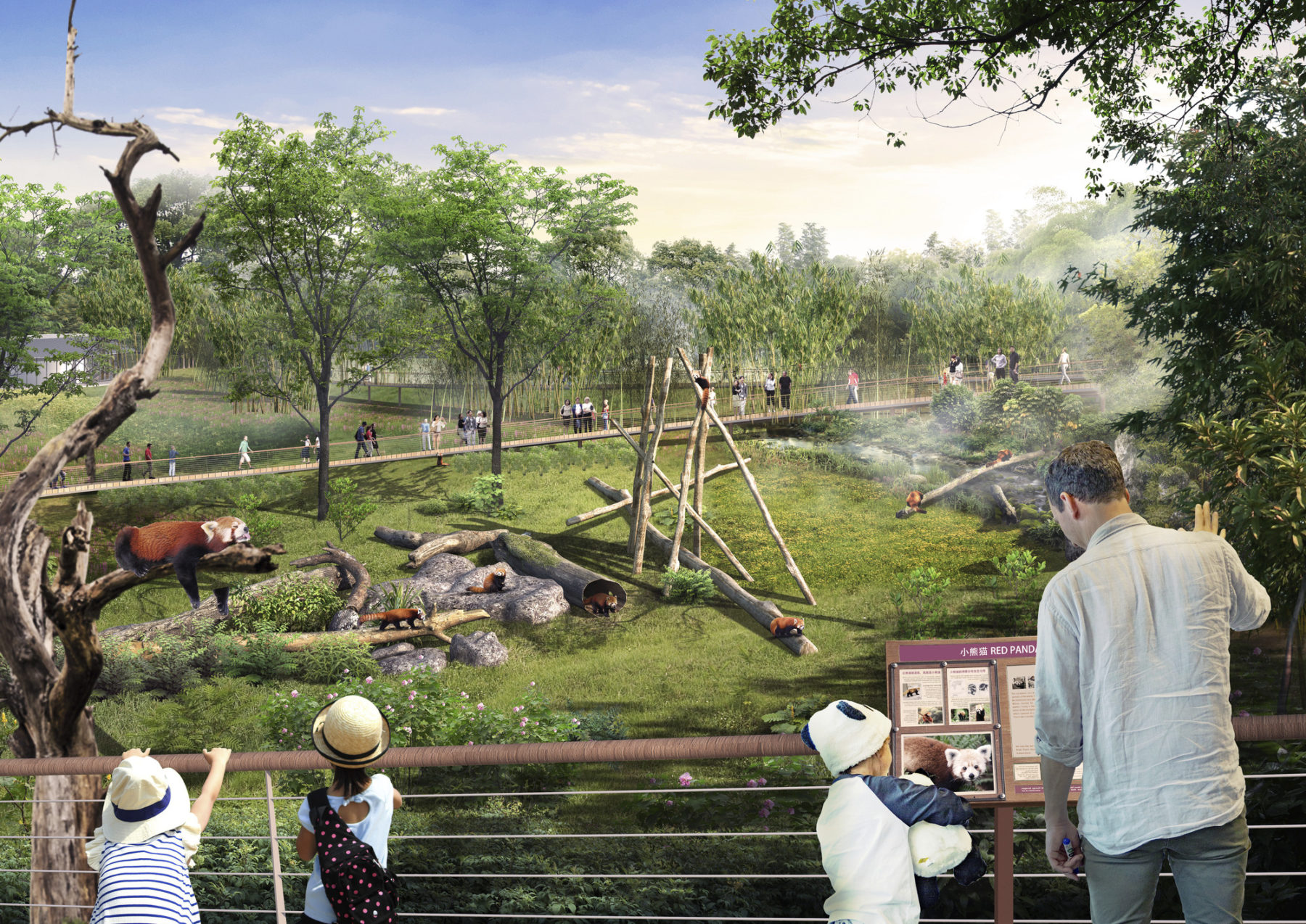
The second, and most remote of the three sites, is the Dujiangyan Panda Wilderness. primarily focusing on research, including breeding techniques and assimilation into the wild, this more isolated area of the reserve is located at foothills of the tibetan plateau. As one of the gateways into the giant panda national park, researchers here focus on pre-release training to acclimate juvenile pandas born in captivity prior to final release into the wild.

As part of the master planning process, Sasaki developed prototypes of shelters and display areas that balance privacy for the animals without limiting the visitor experience. Strategies include non-intrusive viewing platforms and secluded areas for animals to retreat.
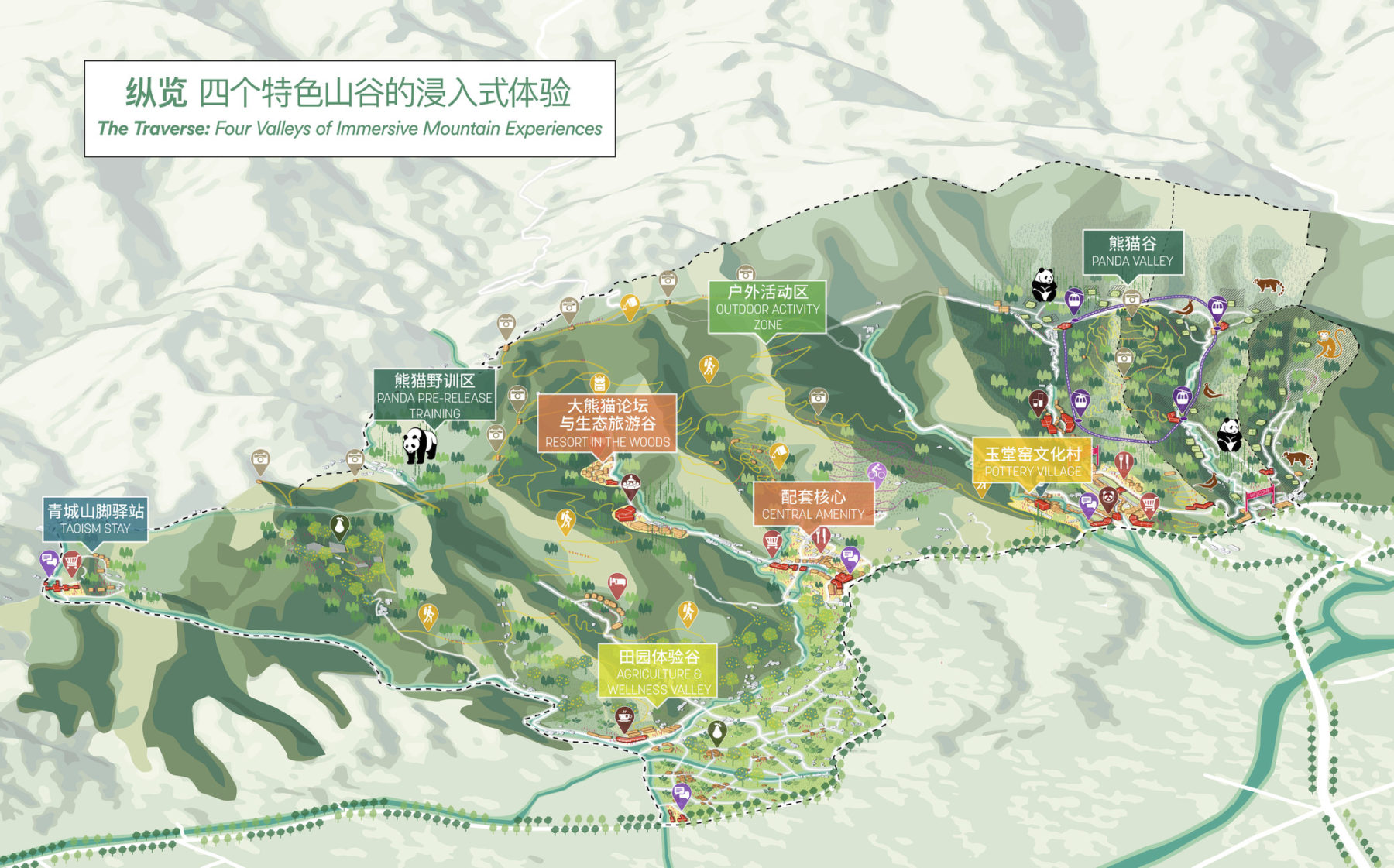
The Dujiangyan Panda Wilderness focuses on research on breeding techniques and pre-release training of juvenile pandas into the wild
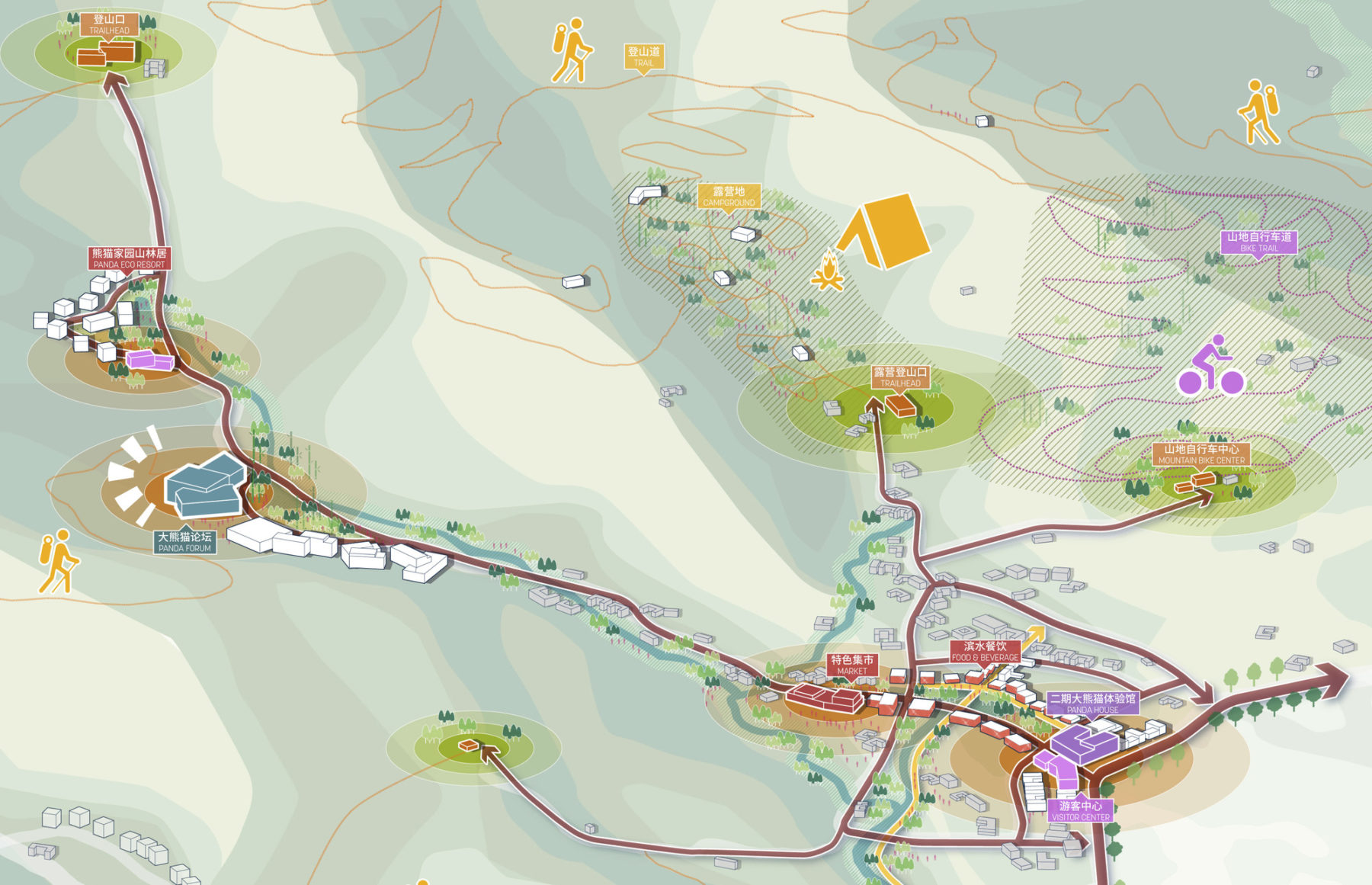
A main entrance at the foothills of the Dujiangyan Panda Wilderness provides multiple routes to different destinations including the international panda research forum, environmental education camps, and eco-tourism experiences including mountain bike and hiking trails
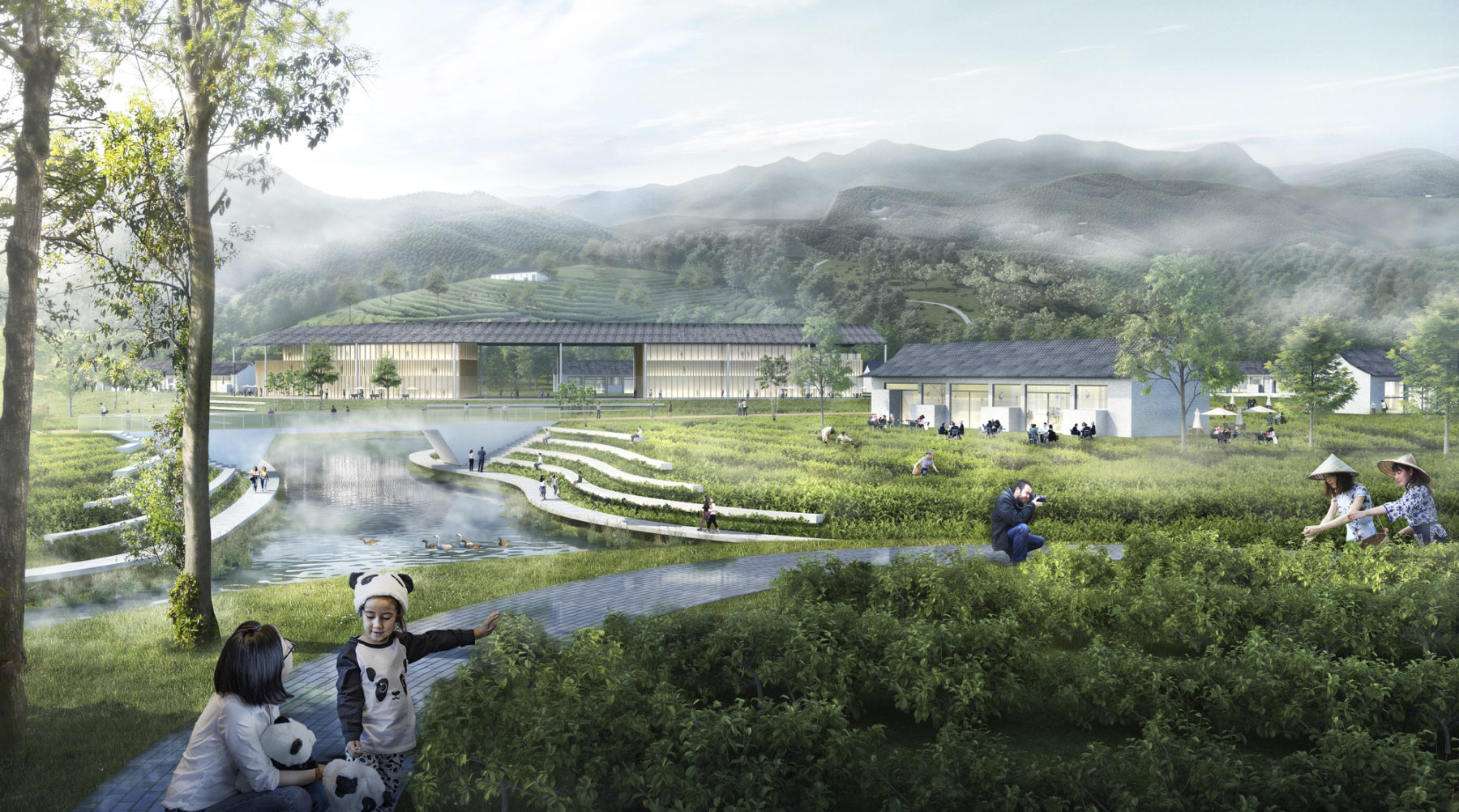
At the foothills of the Dujiangyan Panda Wilderness, visitors can relax and enjoy the tranquil agricultural landscape and learn about Chengdu’s ancient culture and acclaimed cuisine
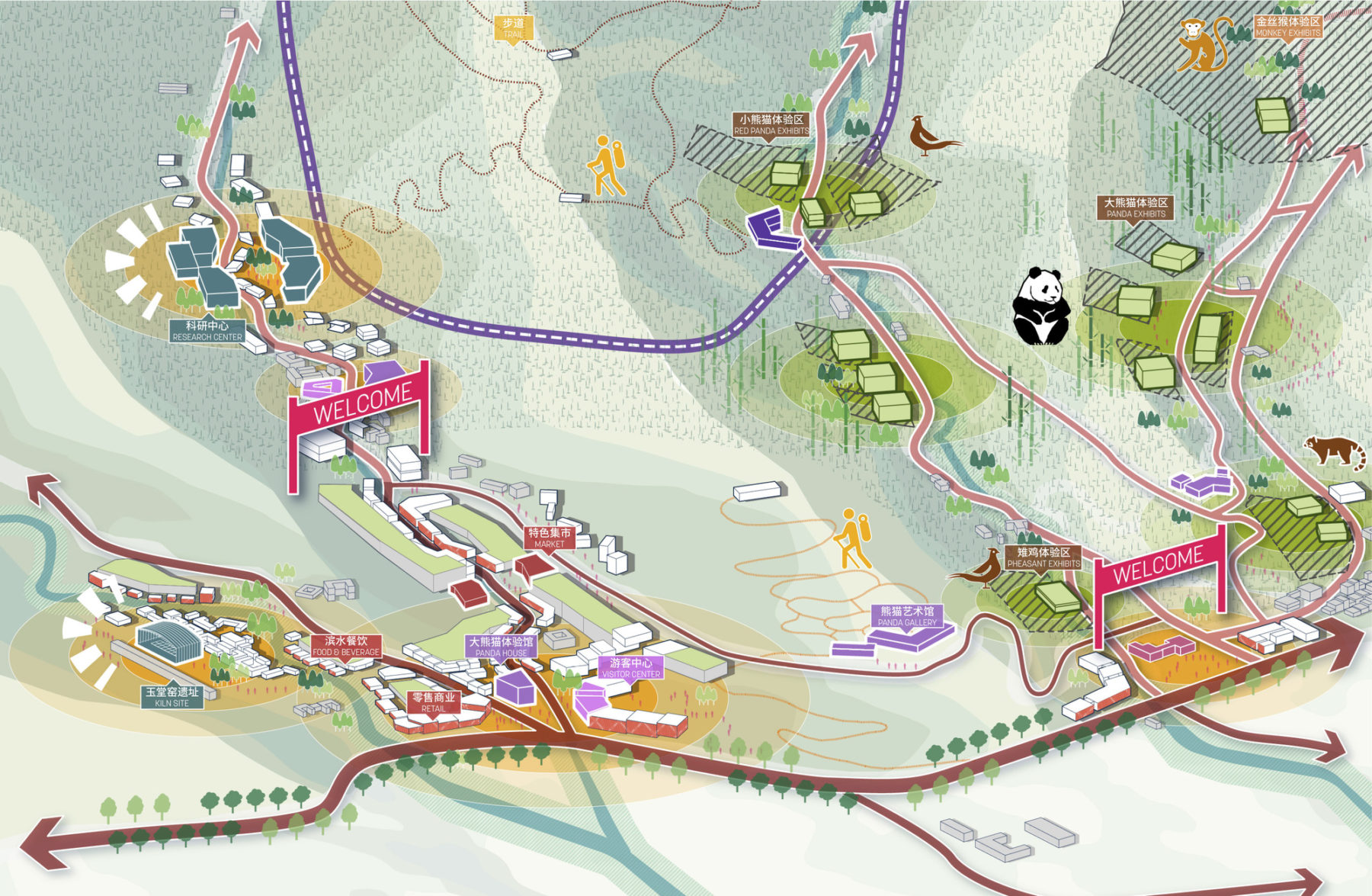
The Dujiangyan Panda Wilderness traverses four distinct valleys, each programmed based on its unique natural setting, educational focus, and cultural amenities
A main entrance at the foothills of the Dujiangyan Panda Wilderness provides multiple routes to different destinations including the international panda research forum, environmental education camps, and eco-tourism experiences including mountain bike and hiking trails
At the foothills of the Dujiangyan Panda Wilderness, visitors can relax and enjoy the tranquil agricultural landscape and learn about Chengdu’s ancient culture and acclaimed cuisine
The Dujiangyan Panda Wilderness traverses four distinct valleys, each programmed based on its unique natural setting, educational focus, and cultural amenities
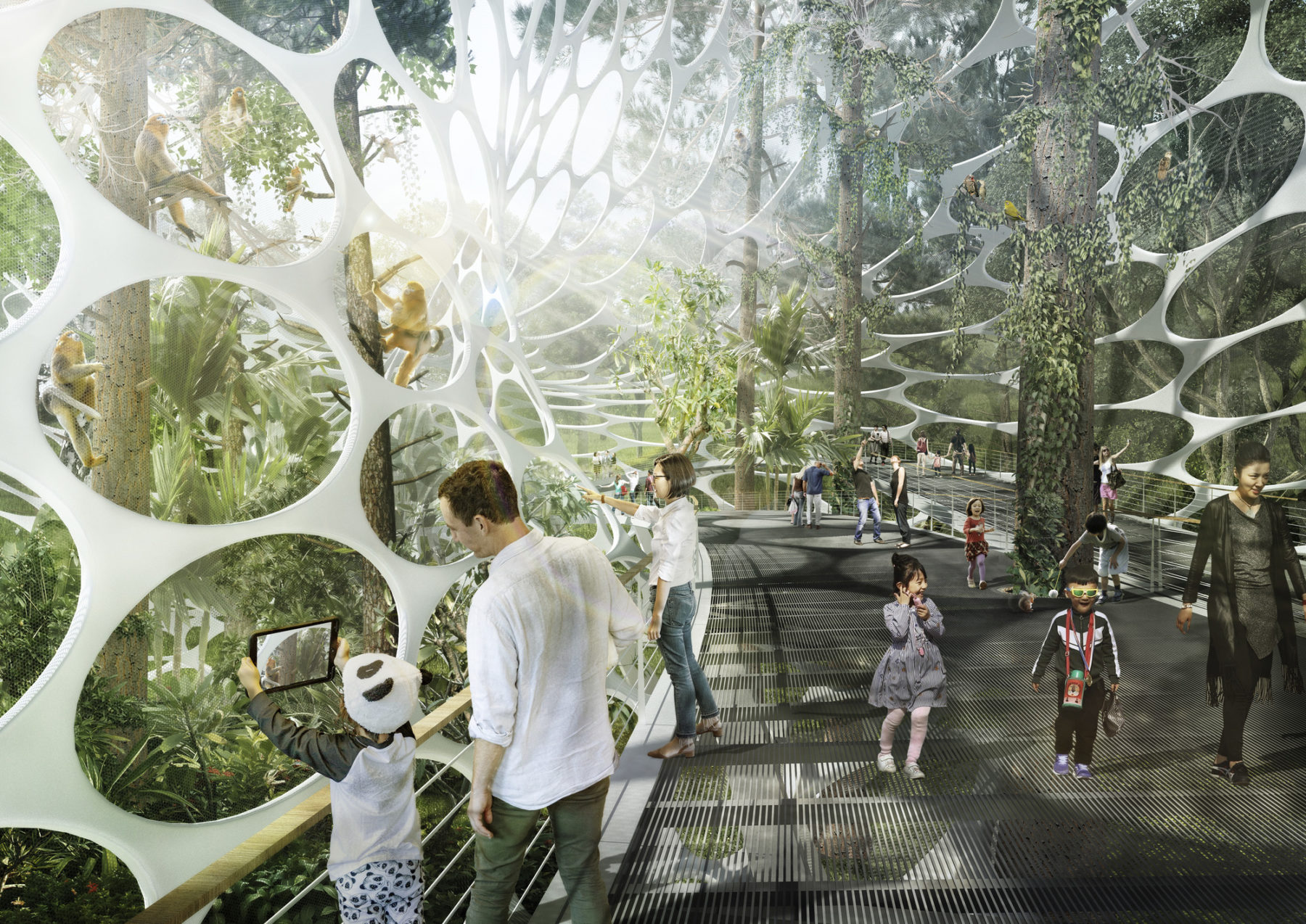
Designed to mimic elements of the giant panda’s natural habitat, enclosures maximize the benefits of the site’s microclimate to create an immersive educational experience
The third site, Longquanshan Panda Village, is located near Chengdu’s new airport and provides an abbreviated glimpse into conservation efforts and highlights Chengdu’s distinctive culture. This gateway into the city will provide an educational overview of the region’s history, food, and wildlife, including the prized native panda.
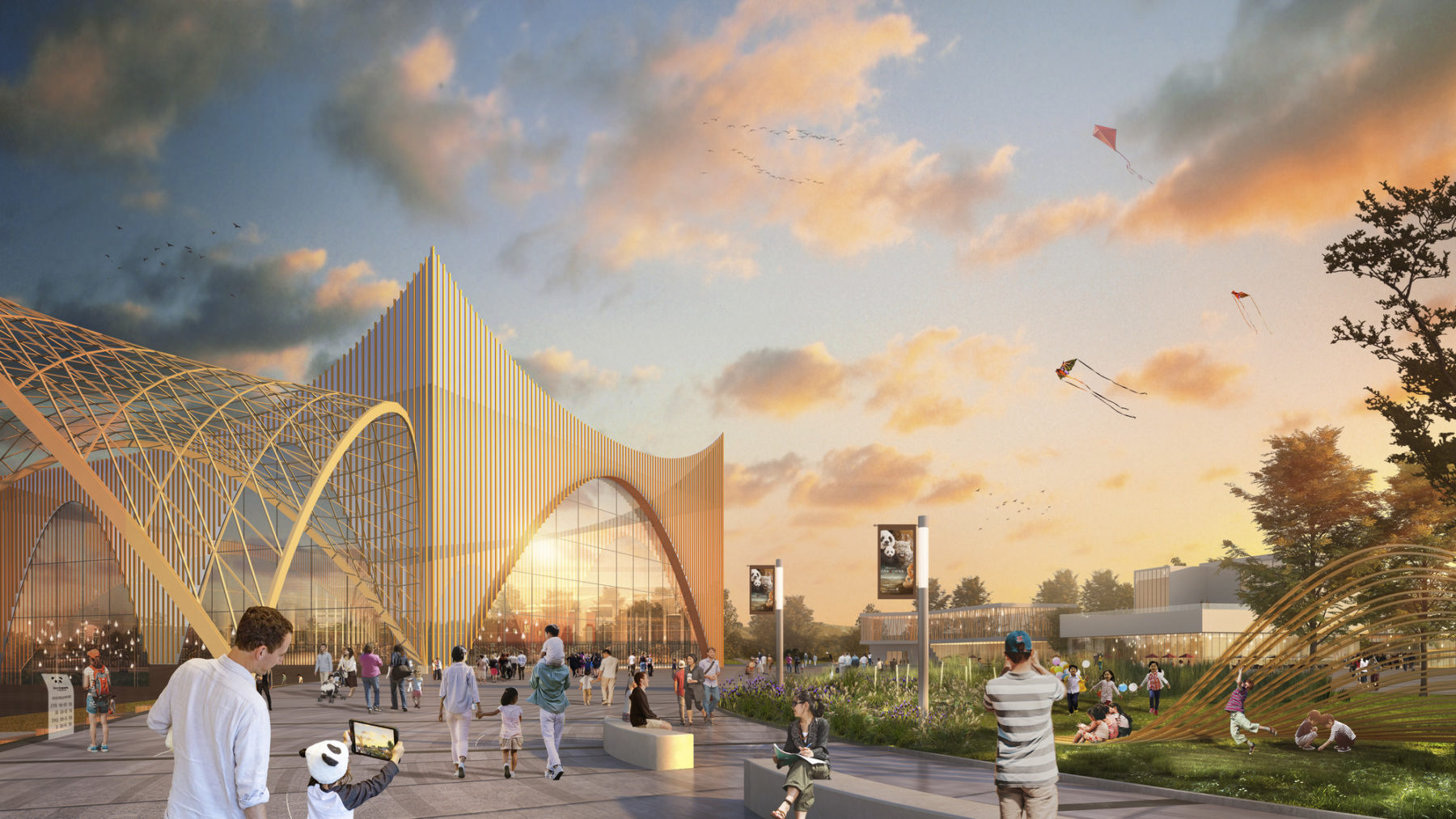
The third site, Longquanshan Panda Village, is located near Chengdu’s new airport and provides an abbreviated glimpse into conservation efforts and highlights Chengdu’s distinctive culture. This gateway into the city will provide an educational overview of the region’s history, food, and wildlife, including the prized native panda.
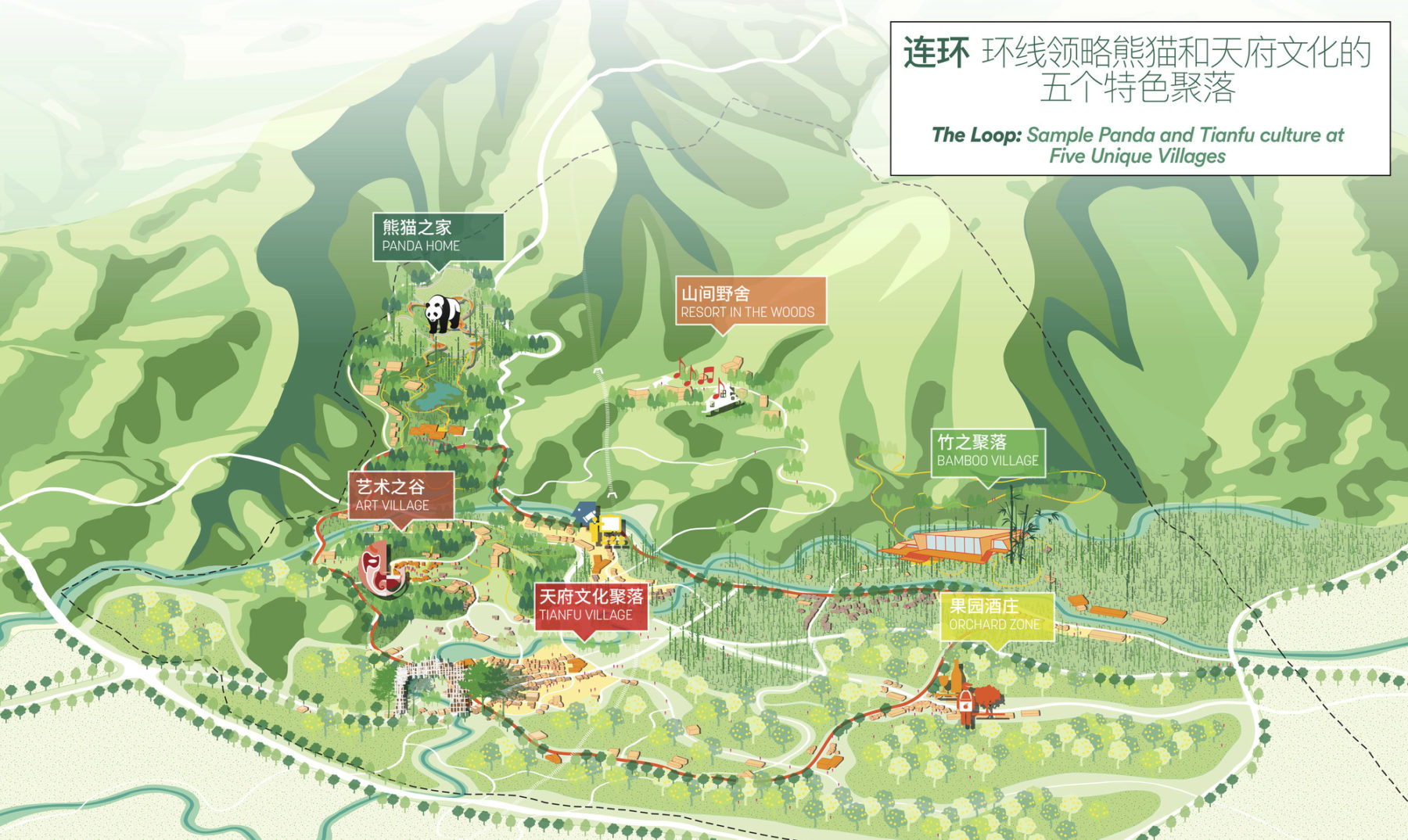
The Longquanshan Panda Village, located near Chengdu’s new international airport, provides a curated experience where visitors can experience the culture of Sichuan Province, learn about the science behind the resurgence of the giant panda, and explore a bamboo forest ecosystem
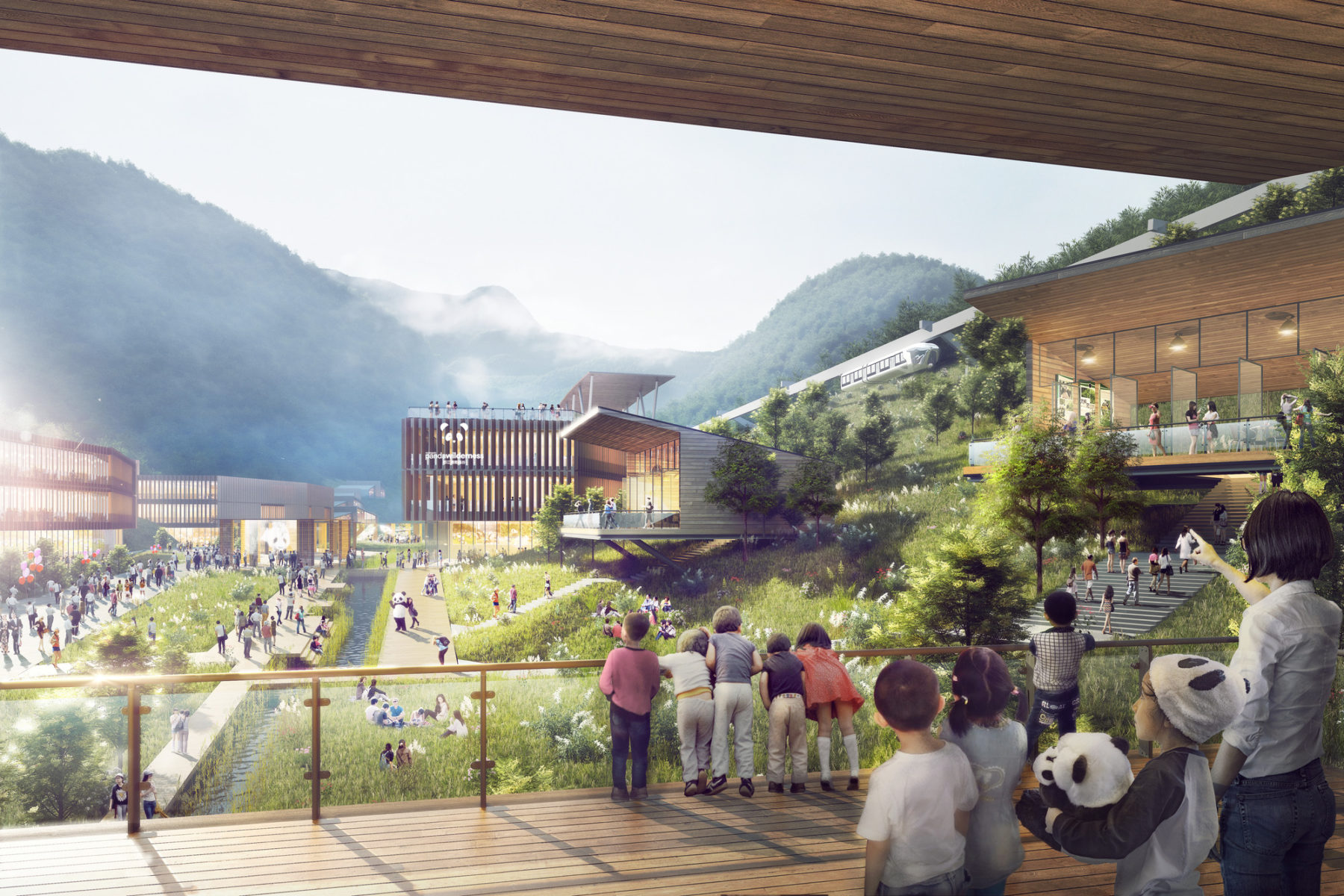
“In the education centre visitors learn about pandas” daily lives and habits
The Longquanshan Panda Village, located near Chengdu’s new international airport, provides a curated experience where visitors can experience the culture of Sichuan Province, learn about the science behind the resurgence of the giant panda, and explore a bamboo forest ecosystem
“In the education centre visitors learn about pandas” daily lives and habits
It is difficult to name an animal more beloved than the giant panda. The near-universal adoration of this endangered species was never far from mind as Sasaki collaborated with city leaders to thoughtfully grow the city while building a resilient future for the species.
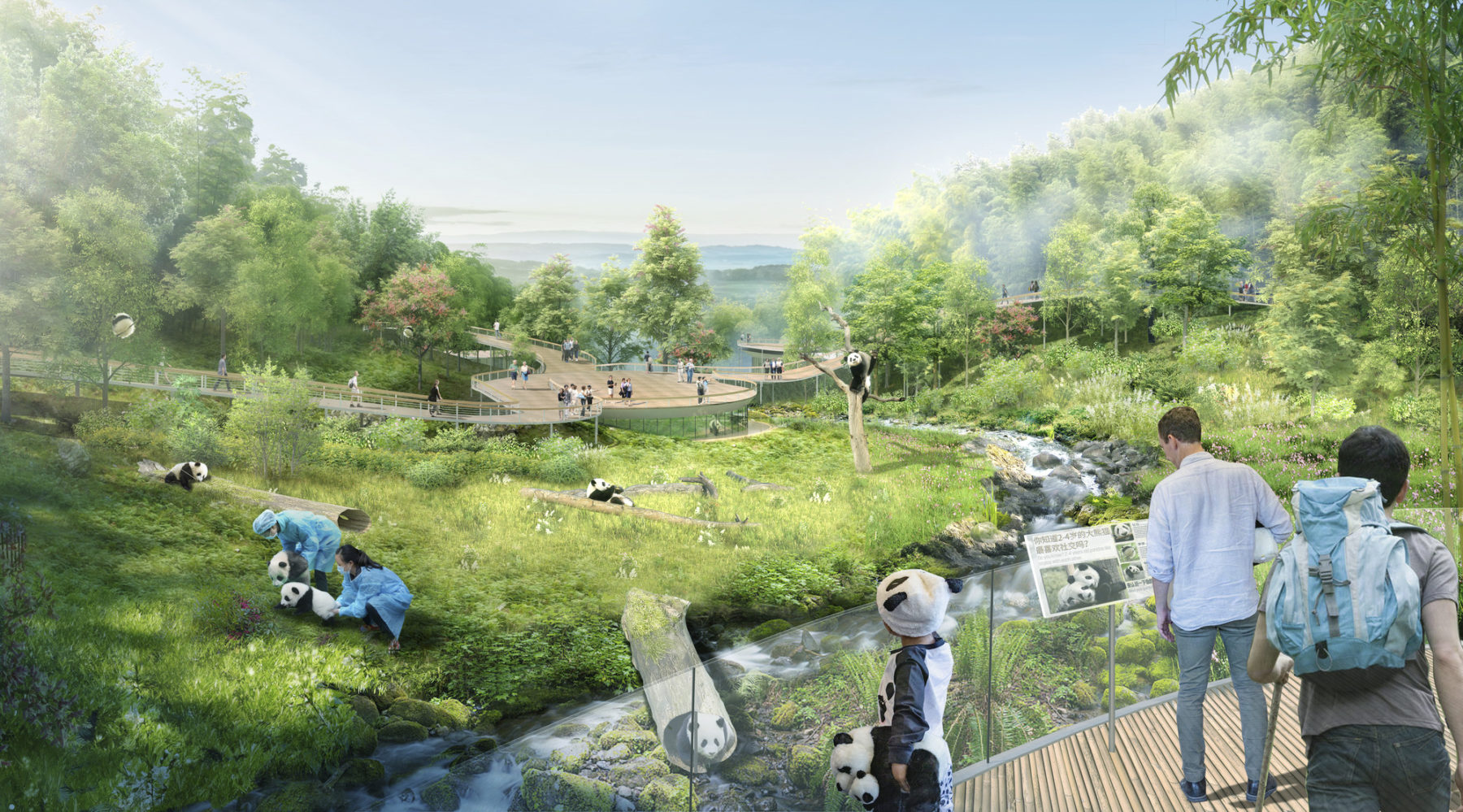
Sasaki beat out 98 other contenders with a plan that balances smart urbanism and thoughtful conservation
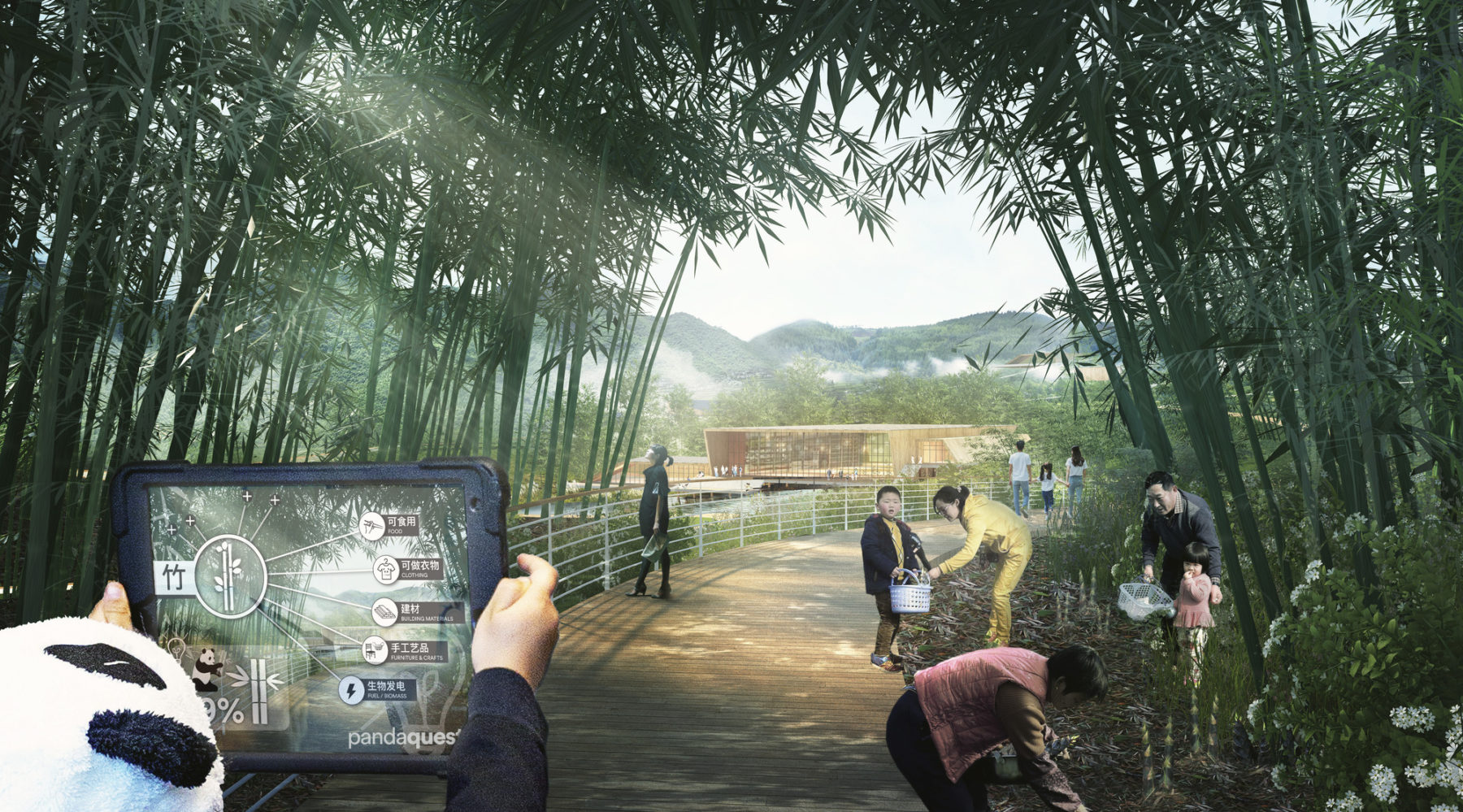
To enhance the visitor experience, Sasaki developed PandaQuest—an educational app that allows visitors to explore the three sites and learn about pandas and their habitat with an interactive game. Wildlife enthusiasts around the world can also connect with the Reserve via the app.
For more information contact Michael Grove or Tao Zhang.

